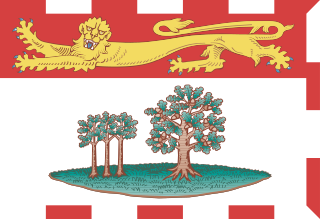
Prince Edward Island is an island province of Canada. While it is the smallest province in terms of land area and population, it is the most densely populated. The island has several nicknames: "Garden of the Gulf", "Birthplace of Confederation" and "Cradle of Confederation". Its capital and largest city is Charlottetown. It is one of the three Maritime provinces and one of the four Atlantic provinces.

The Northumberland Strait is a strait in the southern part of the Gulf of Saint Lawrence in eastern Canada. The strait is formed by Prince Edward Island and the gulf's eastern, southern, and western shores.

Stratford is a town located in Queens County, Prince Edward Island.
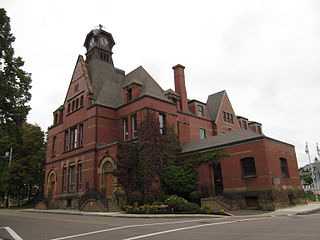
Summerside is a Canadian city in Prince County, Prince Edward Island. It is the second largest city in the province and the primary service centre for the western part of the island.

Confederation Centre of the Arts is a cultural centre dedicated to the visual and performing arts located in the city of Charlottetown, Prince Edward Island, Canada.
The Charlottetown Festival is a seasonal Canadian musical theatre festival which runs from late May to mid-October every year since 1965.
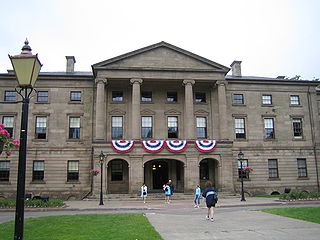
Province House is where the Prince Edward Island Legislature, known as the Legislative Assembly of Prince Edward Island, has met since 1847. The building is located at the intersection of Richmond and Great George Streets in Charlottetown; it is Canada's second-oldest seat of government.
The Charlottetown Driving Park (CDP), located in Charlottetown, Prince Edward Island, Canada is a harness racing track for racing standardbred horses.
Daniel Joseph MacDonald was a Canadian politician from Prince Edward Island. He served as Minister of Veterans Affairs from 1972 to 1979 and again in 1980 until his death.
RCAF Station Charlottetown was a Royal Canadian Air Force station located in Sherwood, Prince Edward Island. Today's Charlottetown Airport maintains a remnant of the airfield's runways near its general aviation terminal, but all buildings and most infrastructure have been removed.

Ardgowan is a National Historic Site of Canada located in Parkdale, Prince Edward Island, currently a neighbourhood of the city of Charlottetown.

The Roman Catholic Diocese of Charlottetown is a diocese of the Catholic Church in Canada. It is a suffragan diocese comprising the entire province of Prince Edward Island.

Route 2, also known as Veterans Memorial Highway and the All Weather Highway, is the longest highway in the province of Prince Edward Island, Canada, at 216 kilometres (134 mi). It is a two-lane uncontrolled access highway that runs nearly the entire length of the province, from Tignish to Souris. Route 2 was recognized as the first numbered highway in the province in 1890, when it opened between Charlottetown and Summerside.
CBAF-FM-15 is a French language Canadian radio station located in Charlottetown, Prince Edward Island.
West Royalty is a neighbourhood of the city of Charlottetown in central Queens County, Prince Edward Island, Canada.

The Hillsborough River Bridge is a bridge crossing the Hillsborough River estuary between Charlottetown and Stratford in Queens County, Prince Edward Island. The current road bridge, built in 1962, replaced a 1905 rail bridge crossing the same span which was known by the same name.
Ella Jean Canfield, née Garrett was a Canadian politician. She was the first woman ever elected to the Legislative Assembly of Prince Edward Island, as well as the first woman to serve in the Executive Council of Prince Edward Island.

Victoria Park is a waterfront park in the city of Charlottetown, Prince Edward Island, Canada.
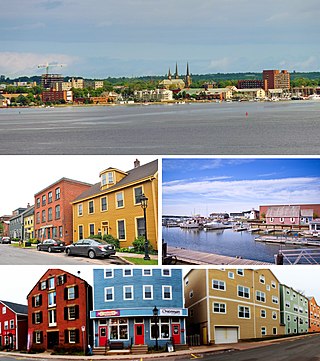
Charlottetown is the capital and largest city of the Canadian province of Prince Edward Island, and the county seat of Queens County. Named after Queen Charlotte, Charlottetown was an unincorporated town until it was incorporated as a city in 1855.
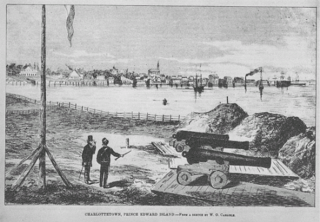
The History of Charlottetown can be traced back to the original French military settlement established on the site in 1720. Over the years Charlottetown has grown to become the largest and most important city on Prince Edward Island.














